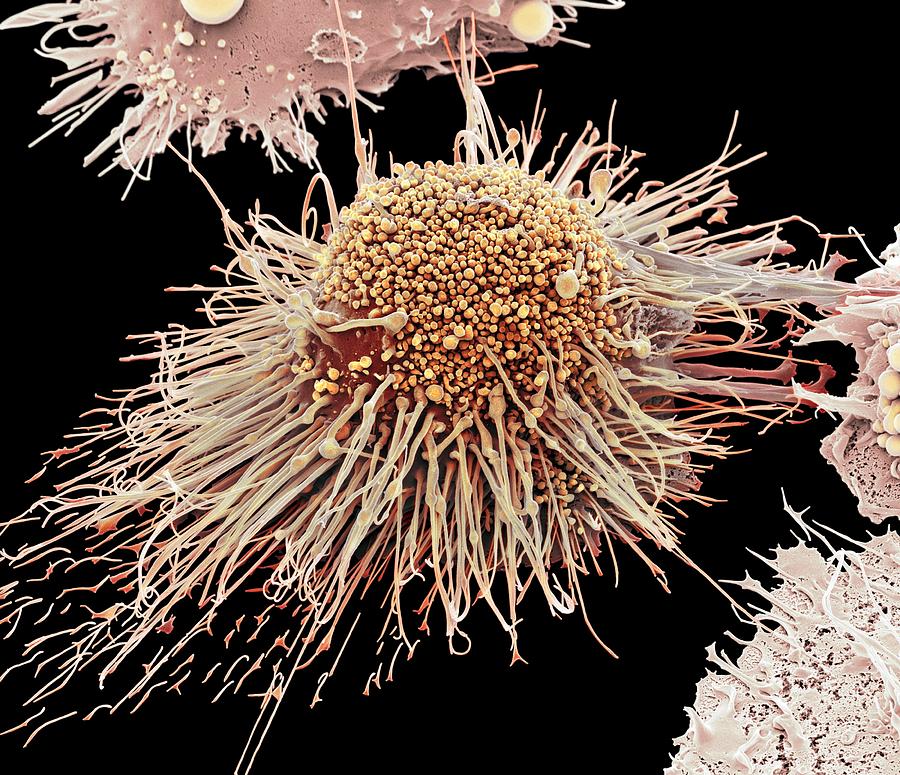Last week, I had the pleasure of participating in the 2025 C5 Annual Forum on Pharma & Biotech Patent Litigation in Europe, held in Amsterdam. The conference was a reminder (if ever one was needed) that patent law never stands still. There was a lot of food for thought from the various panels and networking discussions. Some hot topics that caught my interest are discussed below. Thanks should also go to the conference organiser Andrea Tredenick, for a very efficiently run conference and thought-provoking agenda. See here for full details of the speakers and topics.
Plausibility and G 2/21: EPO business as usual?
G 2/21 and plausibility continues to be highly relevant at both the EPO and the courts. The first day of the conference included a panel session discussing the ongoing complexity of interpreting G 2/21 and its impact in national courts and the UPC. As pointed out by a member of the panel Dr. Eva Susanne Ehlich (Maiwald), the decision in G 2/21 addresses issues at the heart of the fundamental tension facing innovators, particularly smaller firms and universities who often face regulatory deadlines and investment pressures that don’t align with ideal patent filing timelines. A question for the panel and the audience was whether G 2/21 changed the EPO plausibility test. Contrary to the view of some commentators, I have been a long advocate that G 2/21 did not change the plausibility threshold given that G 2/21 was not really about plausibility as such. A poll of the audience showed a roughly even split on whether G 2/21 changed practice at the EPO.
A fascinating perspective was provided by Dr Sönke Holtorf (EPO Examiner). Dr Holtorf was unequivocal that G 2/21 has not fundamentally changed examination practice at the EPO. As summarised by Dr Holtorf, Examiners had been evaluating disclosure and plausibility issues in applications long before G 2/21. The view from the EPO was also that G 2/21 is also considered relevant to all Boards of Appeal and technical areas, although pharma and biotech cases are of course where issues of evidence most often arise. Dr Holtorf did note, however, that G 2/21 has complicated opposition proceedings by creating more lengthy arguments about whether technical effects relied upon for inventive step were properly embodied in the original application. Finally, there was some news from the EPO that the order from G 2/21 will be incorporated into updated EPO Guidelines for Examination.
Unified Patent Court: Opt-outs and cross-border litigation
The UPC was a big focus for the conference. Amongst all the detailed analysis of the decisions, I noted some key points of interest and debate. First, it was clear that there is some confusion over two significant questions relating to the transition period and opt-outs. There was particularly disagreement amongst the panel and members of the audience over the likelihood that the transition period will be extended. One view expressed was that the current lack of any lobbying or requests for extension of the transition period, is a sign that everyone is happy and that an extension is unlikely. However, a contrary view was expressed that it is currently too early to make an assessment, given that the court has only been going for 2 years. There were also opposing views on the highly critical question of whether it is clear that once a patent is opted out of the UPC, it will stay opted out, even after the end of the transition period. As indicated by a member of the panel, most industry players are assuming that a UPC opt-out is for life, and may be deeply concerned that this may not be certain.
Another interesting topic covered was the potential impact of the CJEU decision in BSH Hausgeräte v. Electrolux (Case C-339/22) on European litigation strategy. The strategic implications of BSH Hausgeräte v. Electrolux are fascinating and still unfolding. The view was expressed on the panel by Oscar Lamme (Simmons & Simmons) that the potential impact may have been overhyped. The view was expressed that cross-border actions at the UPC may not be an attractive strategy, given the likelihood that they could lead to highly expensive national revocation actions, and thus undermine the cost savings of using the UPC in the first place. The panel was not yet aware of any new cases that have been filed which rely on BSH Hausgeräte v. Electrolux.
Practical take-aways from G 1/24 (claim interpretation)
There was no escaping the need for a discussion about G 1/24, albeit that we do not yet have a decision from the EBA on this referral. Rose Hughes spoken on the panel. The session on the G 1/24 compared the different approaches taken by the UPC, EPO, Germany and UK to claim interpretation and how much the description is taken into account. The UPC has adopted a stance that the description and drawings are always to be used as explanatory aids for claim interpretation for both infringement and validity. The preliminary opinion of the EBA was that the description may be used to interpret the claims. As highlighted in Ensygnia v Shell ([2023] EWHC 1495 (Pat)), the UK purposive construction of claim language places a heavy emphasis on the specification as a whole and how this illustrates the purpose of the inventor.
The discussion highlighted a curious thing about the referral in G 1/24. Arguably, the disconnect in EPO Boards of Appeal case law on claim interpretation is not relevant to the facts of the case leading to G 1/24. Indeed, my initial view was the Board of Appeal in the case was jumping the gun on the referral. It is established case law that the description cannot be used to redefine otherwise clear claim language, i.e. a dictionary that completely changes the meaning of words. This is different to the question of whether the claims should be read in the context of the description as a whole and/or whether the description should be used to resolve a lack of clarity in the claims.
Nonetheless, in terms of practical takeaways, there is a clear lesson from the case at issue in G 1/24 to be careful with unnecessary boilerplate definitions. Boilerplate is often copied from previous drafts, but may have become outdated and redundant. In the early days of biotechnology, for example, it may have been necessary to include a lengthy definition of antibody or PCR. However, these are now very well-understood terms in the art and thus arguably do not need to be defined in lengthy definitions that may come back to bite the patentee in litigation. As the recent Board of Appeal decision in T 1193/23 reminded us, AI-generated content in descriptions may lack the appropriate technical context. Regardless of what decision the EBA comes to in G 1/24, the facts of the case are a reminder to be careful of including inappropriate and/or unnecessary definitions in patent drafts.
IP strategy for antibodies (and beyond)
The conference included a panel discussing the diametrically opposed positions of the US and EPO on antibody inventions, where the US Supreme Court’s tough enablement standard in Amgen v. Sanofi is in stark contrast to the EPO’s approach, in which antibody generation is considered routine unless specific complexities arise. This means the inventive step hurdle for antibodies binding a known target is high at the EPO, but broad scope of protection is available in Europe for antibodies binding a new target or epitope.
The UPC is now entering the fray, with the Amgen versus Sanofi PCSK9 cases being among the first pharmaceutical cases tackled by the nascent court. So far, the UPC has followed an EPO-like approach with regards to the inventive step of antibodies. However, the UPC has not yet directly considered the validity of functional or epitope antibody claims of the type rejected by the US Supreme Court. Interestingly however, the claims at issue in the recent UPC second medical use decision broadly define the relevant antibody by function, without any structural features. It is therefore surprising that the sufficiency and inventive step of the functional antibody feature was not considered in the decision, despite it covering within its scope a broad genus of antibodies. We wait to see how the UPC will tackle broad functional antibody claims.
As pointed out by the panel, the EPO Guidelines for Examination include an entire section devoted to antibodies. However, the legal principles that apply to functional antibody features, including epitope claims, are also applied to other types of biologics such as cell therapies. Across the pond, the US Federal Circuit has already confirmed that the same law on written description applies to CAR-T cell therapies as to antibodies. At the EPO, patent applicants can also expect the EPO to use similar inventive step objections against new chimeric antigen receptors as antibodies. Given that the composition of matter patent for the CAR will often be used to define the loss of exclusivity for a CAR-cell therapy, innovators need to be cognisant of the challenges and opportunities associated with obtaining strong CAR IP, especially in cases where the binding region is repurposed from an existing antibody molecule. On the other hand, as with antibodies, there also remains the possibility for broad protection for CARs that bind new targets or epitopes. See, for example, EP3172231 B1, which broadly claims an anti-BCMA CAR without any limitation to a particular binding domain sequence.
Final thoughts
If nothing else, the first day of the conference demonstrated that patent law in Europe is not getting any simpler or easier to navigate. IP strategy must continue to adapt in order to navigate the increasingly complex landscape of evolving EPO case law, the maturing UPC system, and the continued divergent international approaches to pharma biotechnology patents. Stay tuned for Day 2, focusing on SPCs and AI.
Author: Rose Hughes
This post is based on a previous article on IPKat.










